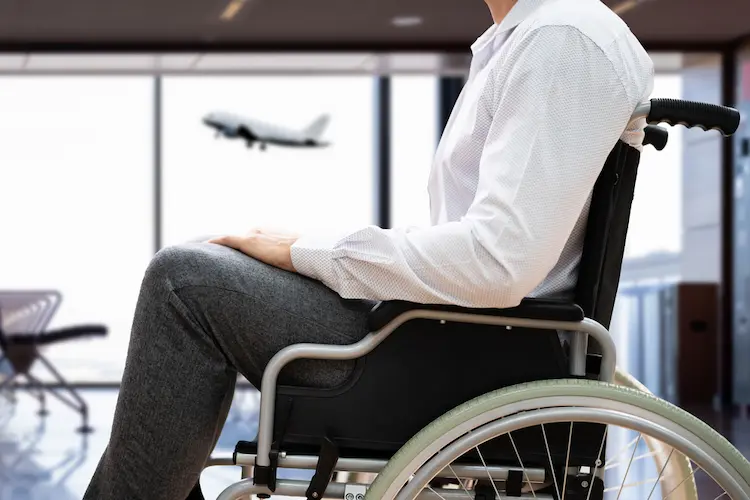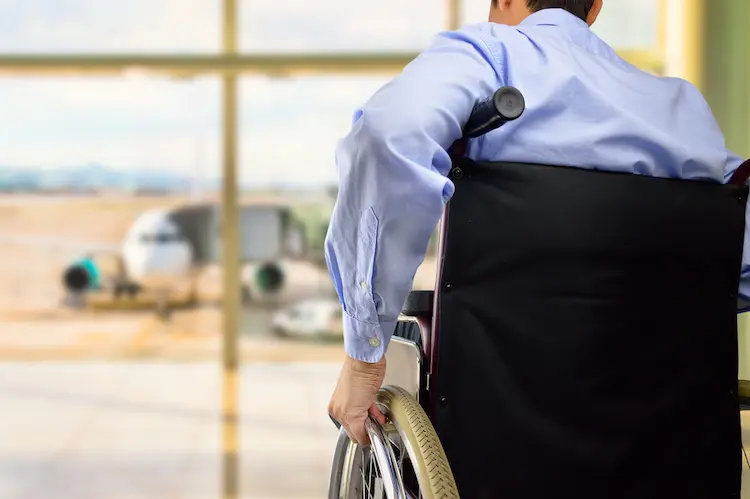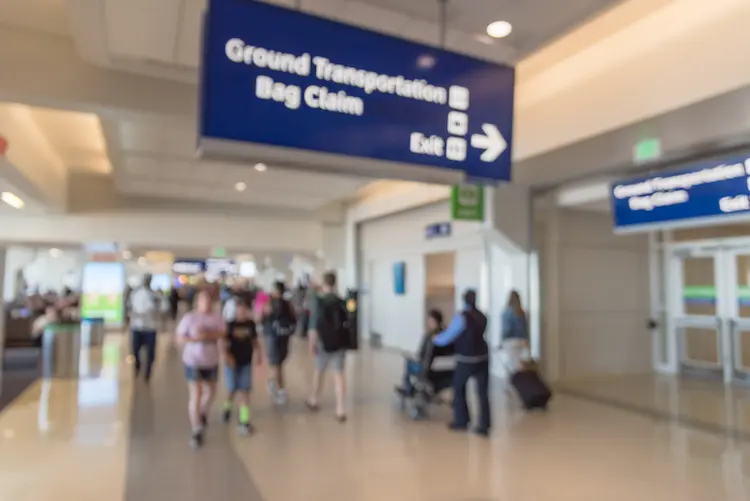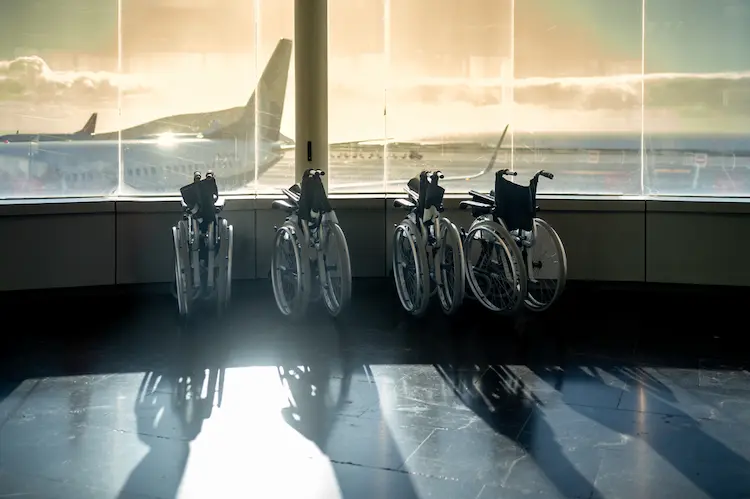Traveling can be a liberating experience, a chance to explore new horizons and collect memories. But for wheelchair users, the thought of flying can evoke a mix of excitement and apprehension.
Then how do you ensure a smooth journey when your mobility relies on a device that needs as much care in transit as you do?
Our guide is your co-pilot, offering clear, step-by-step advice on how to pack a wheelchair for flight, ensuring that you and your chair arrive ready for adventure. So, let’s begin

Understanding the Air Travel Landscape for Wheelchair Users
The skies might be friendly, but the path to them requires some preparation. Wheelchair users face unique challenges when flying, from airport logistics to the flight.
Understanding these challenges is the first step to conquering them.
The Air Carrier Access Act is a crucial ally, prohibiting discrimination based on disability. It mandates that airlines provide assistance and accommodate wheelchairs in various ways.
However, policies can vary between airlines, so you must contact your airline directly well before your flight to understand their specific procedures.
How to Pack Wheelchair for Flight
Before you even consider heading to the airport, your wheelchair needs a pre-flight check-up.
Clean every nook and cranny, and tighten all bolts—your chair must be in top condition to withstand the rigors of air travel.
Packing your wheelchair involves more than just folding it up or securing the batteries. It’s about ensuring every part of it is protected. Use bubble wrap for delicate areas, and don’t forget to remove and carry on any detachable parts like cushions or joysticks to prevent loss or damage.
Manual wheelchair users should consider the benefits of a folding manual wheelchair for easy transport. If you’re a powered wheelchair user, you’ll need to know your battery type—airlines have specific regulations, especially concerning gel cell batteries, to ensure safety in the skies.
For more comprehensive insights on preparing for your journey, don’t miss our Main Guide to Air Travel for Wheelchair Users, which covers everything from selecting the right wheelchair for travel to understanding airline policies.
Packing a Manual Wheelchair for Flight
When flying with a wheelchair, a folding manual wheelchair is often the go-to for its compact nature. Begin by collapsing the chair as flat as possible. Secure loose cables and moving parts with duct tape to prevent snagging or damage. For added protection, wrap the frame in bubble wrap and place it in a sturdy travel case if available.
At the airport, label your wheelchair with your contact information. When you reach the gate, inform the staff that you’ll need a gate check for your chair. It ensures that your wheelchair is one of the last items loaded onto the plane and one of the first out, reducing wait times at your destination.
While securing your folding manual wheelchair with duct tape and bubble wrap, choosing the right travel bag can make all the difference. Discover our top picks for the best travel bags designed to protect your mobility aid during your travels
Packing a Powered Wheelchair for Air Travel
Power wheelchair users must take extra steps when preparing for air travel.
First, check with your airline about their specific battery policies. Gel and dry cell batteries are generally acceptable, but some airlines restrict wet cell batteries.
Disconnect the battery and secure it according to the airline’s instructions, which may involve taping over the terminals and ensuring it’s in a protective case. Attach clear instructions for reassembling any parts that the ground crew will need to handle.
Remember, communication with your airline is key to a smooth experience.
Navigating Airport Security with Your Wheelchair
Airport security can be a daunting hurdle, but being prepared makes it more accessible. Wheelchair users should arrive early to allow extra time for security checks.
Inform the TSA agent if you have any specific needs or concerns.
You must go through a metal detector or a manual pat-down. Your wheelchair will be inspected, possibly with a hand-held metal detector or a swab test for explosives.
If you have a TSA PreCheck, notify the agent, as it may expedite the process.
Boarding the Plane with Your Wheelchair
Boarding is another critical phase where wheelchair users need to be proactive. Inform the gate agent upon arrival that you will need assistance boarding.
Most airlines will allow you to pre-board to give you extra time to settle.
During boarding, you may transfer to an aisle chair to reach your plane seat. Flight attendants are trained to assist with the transfer and will help stow your carry-on items.
If you require additional support, such as a transfer sling, bring this to the attention of the cabin crew early on.

On the Plane: Ensuring Comfort and Safety As a Wheelchair User
Once aboard, securing a plane seat that caters to your needs is paramount. Bulkhead seats offer more legroom, which can be a boon for comfort.
Creating a comfort zone in your assigned seat is about more than just legroom. Use cushions or specialized equipment to enhance your in-flight experience. It’s about making the space your own, so the journey feels less like a chore and more like part of the adventure.
Discuss seating arrangements with the airline when booking, highlighting the importance of space for knee supports or a transfer sling if you use one.
Landing and Retrieval: Getting Your Wheelchair Back
The moment the plane touches down, reclaiming your wheelchair begins. Be proactive and remind the flight attendant or agent about your gate check item to ensure a swift return.
Once at baggage claim, keep an eye out for the ground crew bringing up your chair, and don’t hesitate to ask for assistance from airport personnel if there’s a delay or issue.
In case of any mishaps, such as damage to your wheelchair, contact the airline’s complaint resolution official immediately. They assist and ensure that your rights under the Air Carrier Access Act are upheld.
Wheelchair Tips for a Seamless Flight Experience
For a stress-free flight, planning is your best strategy. Secure travel insurance that covers your wheelchair and any other medical equipment. It not only gives you peace of mind but also ensures you’re covered in the event of any unforeseen circumstances.
Remember, flying with a wheelchair involves more than just the physical logistics—it’s also about preparing mentally. Familiarize yourself with the whole process, from airport arrival to the final destination, and don’t hesitate to ask for help.
The more you know, the more empowered you become.
While each airline has its own protocols, Delta Air Lines has taken notable steps to assist wheelchair users. For a closer look at what to expect, dive into our guide on Delta Air Lines’ wheelchair assistance.

Our Top Wheelchair Picks for Travel
Regarding air travel, having the right wheelchair can make all the difference. We’ve handpicked some options that combine portability and comfort, perfect for the globetrotting wheelchair user.
Pride Jazzy Passport Folding Power Chair
For those who prioritize ease of transport without sacrificing performance, the Pride Jazzy Passport Folding Power Chair is a standout choice. Its compact design folds in a few simple steps, making it a breeze to handle during your travels.
Move Lite Folding Power Wheelchair
If you’re looking for a wheelchair that’s not only easy to fold but also light enough to carry, the Move Lite Folding Power Wheelchair is the way to go. It’s designed for the active traveler who doesn’t want to compromise on mobility and independence.
Conclusion
We’ve journeyed together through the essential steps of traveling with a wheelchair, highlighting the importance of preparation, from packing your wheelchair to navigating airport security and, finally, ensuring comfort on the plane.
These are more than just tips; they’re your passport to a seamless travel experience.
Take these tips and turn them into action. Let them be the wind beneath your wheels as you roll confidently into new adventures. And remember, your stories and experiences are invaluable. Share them with the community, and let’s continue to make air travel more accessible for wheelchair users everywhere. Your feedback not only helps us but also guides many others embarking on similar journeys.
Also, if you’re looking for a comprehensive resource to help you navigate all aspects of flying with a wheelchair, look no further and read our guide on air travel for wheelchair users.


